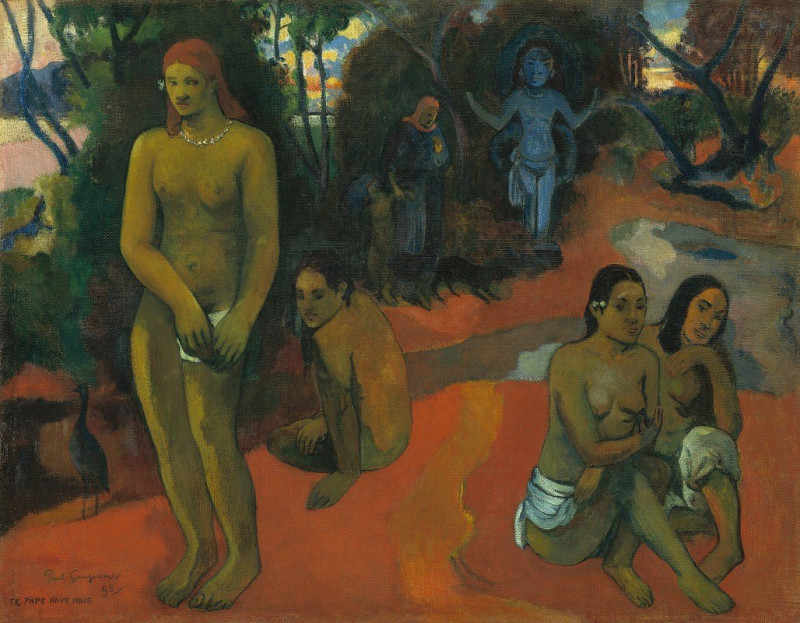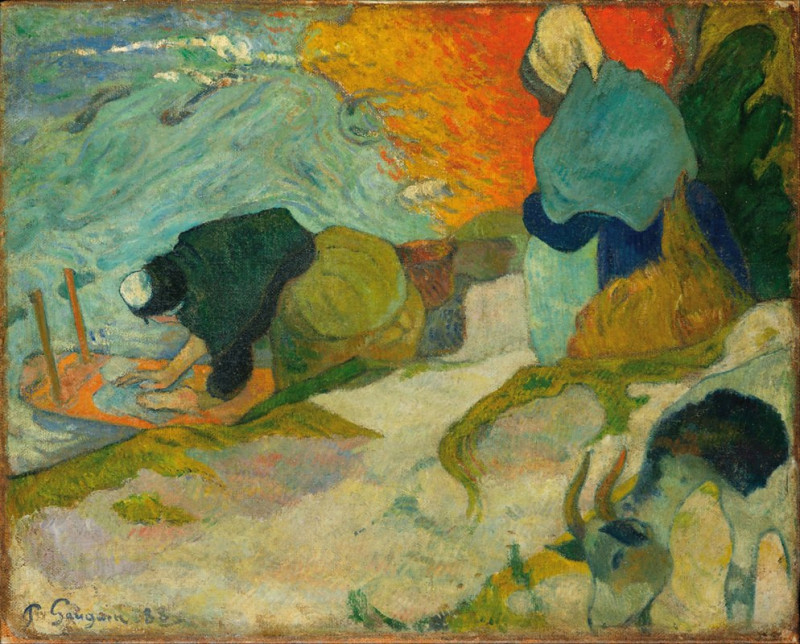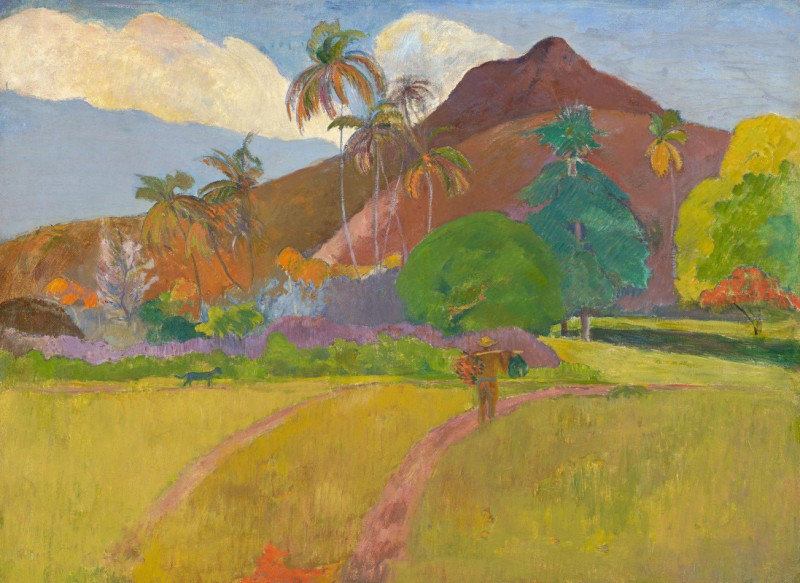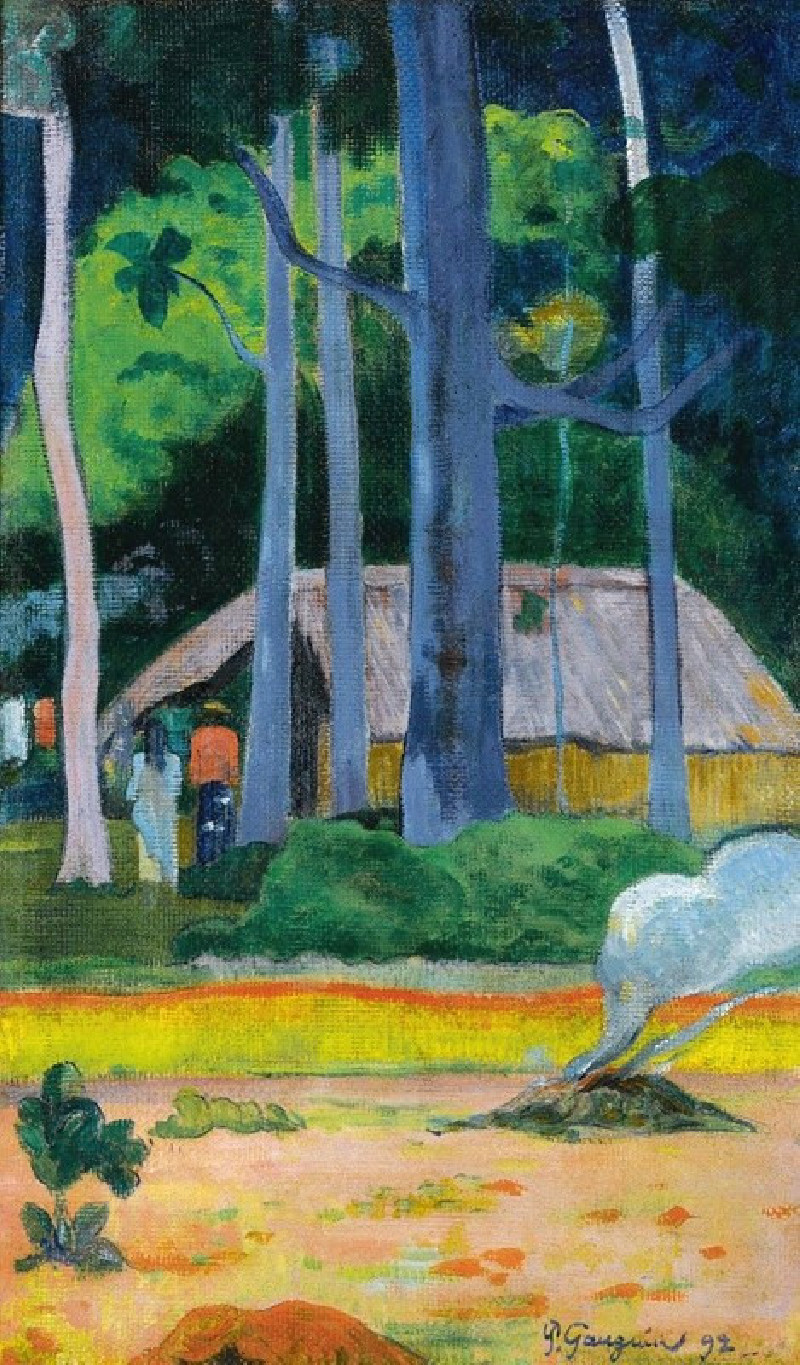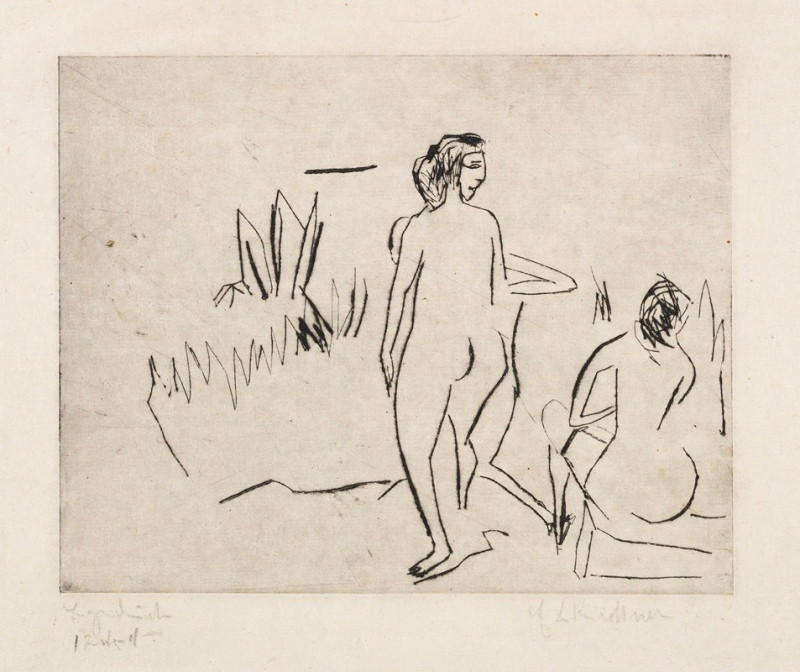The White Horse (1898)
Technique: Giclée quality print
Recommended by our customers
More about this artwork
Paul Gauguin's painting, "The White Horse," created in 1898, offers a mesmerizing glimpse into the artist’s Tahitian period, characterized by a vivid, expressive use of color and a deep engagement with the pastoral and serene landscapes of the island. The artwork depicts a tranquil river scene, with the primary focus on a white horse that bends to drink from the water, its distinctly curvilinear form reflecting Gauguin’s departure from realistic portrayal towards a more stylized, abstracted interpretation.In the background, two Tahitian figures ride on horses, their forms marked by bold, flat areas of color and a deviation from perspective, which was typical of Gauguin's post-impressionistic style. The painting is delineated with fluid, dreamlike boundaries that emphasize the fusion of human with nature. The lush greenery and the flowing river enhance the sense of an unspoiled, idyllic paradise."The White Horse" is representative of Gauguin’s fascination with what he perceived to be the more ‘primitive’ aspects of the cultures he encountered. This work not only depicts daily life in Tahiti but also conveys the spiritual and mythic dimensions Gauguin imbued in his works, suggesting a harmonious balance with nature, untouched by modernity. The painting invites viewers to ponder the relationship between humans and nature, as well as the idealization of the 'exotic' in the context of Western art movements of the time.
Delivery
Returns
Eugène Henri Paul Gauguin was a French Post-Impressionist artist. Unappreciated until after his death, Gauguin is now recognized for his experimental use of color and Synthetist style that were distinct from Impressionism. Toward the end of his life, he spent ten years in French Polynesia. The paintings from this time depict people or landscapes from that region.









